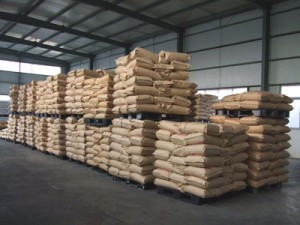Prospects of Polyanionic Cellulose
PAC, short for polyanionic cellulose, is a water-soluble cellulose ether derivative made from natural cellulose by chemical modification, and usually the sodium salt of PAC is in application. PAC is in the appearance of white powder, non-toxic, odorless, and soluble in water to form a viscous solution. Due to the introduction of strongly polar sodium carboxymethyl in the polymers of linear structure, the water-soluble colloid of PAC has good thickening, suspending, dispersing, emulsifying, stabilizing, salt resistance, water retention, and protective colloid effects, widely used in petroleum, paints, daily chemicals, food, textile, papermaking, building materials and other fields.
PAC belongs to polymer anionic electrolytes, usually obtained from the isopropyl alcohol solution of alkali cellulose and chloroacetic acid by etherification reaction. The raw materials for the production of PAC are similar to those for the production of high viscosity CMC, but in the production process, different degradation methods are employed so that the substitution of hydroxyl group in the ring structure of β-glucose group will be more uniform.
The uses of PAC are quite wide. Now the products mainly supply the domestic oil drilling market, used as the additive of oil drilling mud on land and offshore, in conjunction with HEC. PAC is better than other carboxymethyl celluloses in salt resistance, has the effect of inhibiting and dispersing the drill cuttings, and in the case of higher well temperatures can maintain good stability and resistance to water loss, so is an important and efficient treatment agent in the drilling mud.
In the coatings industry, replacing the solvent-based coatings with the water-based coatings has become an inevitable trend in the development of the coatings industry. PAC can be added to the water emulsion coatings and used as the thickener and film former, can make the product storage stable, the color development uniform, the rheologic property good, easy for the mechanical construction, and can help to improve the flexibility and gloss of coatings. In the daily chemical industry, it can be used in the viscous additives of toothpaste, the dirt-dispersing agent and anti-redeposition agent of soaps and detergents, as well as the film former, binder, and conditioning agent of cosmetics. In the textile industry, it can be used for the sizing agent of veil as an alternative to starch, and for the printing paste of cotton and the penetrated printing paste of real silk in order to increase the fluidity of the paste and act as a protective colloid in emulsion paste. In the paper industry, it is used for the thickener of paper pulp and the oil-resistant ink-absorbing agent, can increase the longitudinal strength and smoothness of paper, and can improve the oil resistance and ink absorbency of paper. In addition, it is used as the emulsifier of gelatin, ice cream and margarine in food, the binder of ceramic powders, the crack resistant agent of concrete walls, and for processing of other fine chemical products.
The PAC-based drilling mud system has been highly respected abroad. In the mid-1980s, U.S. producers once broke into the drilling market of our country with it as the trump product, praised by the domestic mud circle. PAC has always been one of the most popular treatment agents in the international drilling market. The worldwide demand of PAC is about 200,000 tons, and the domestic demand is also rising year by year. There will also be a heavy use of this product for the development of oil and gas fields in recently proven Bohai Sea. With the exploration and development of offshore oil, PAC, with the price advantage, is expected to be exported to the United States, Singapore, India, Iran, etc. PAC has greater market potential and development prospects.

